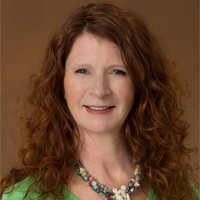Speakers
4 speakers
Date & Time
Aug 10, 2021 2:00 p.m. ET
Webinar
Date: On Demand
Duration: 1 hour
Cost: No Fee
The 2020 Federal Employee Viewpoint Survey found 59 percent of employees teleworked daily at some point during the pandemic. The data also shows how agencies expanded telework to employees who previously couldn’t take advantage of the program before the pandemic began. According to 2020 FEVS, 24 percent of federal employees did not telework before the pandemic because they had to be physically present on the job.
The FEVS results demonstrate a real culture change among the federal workforce.
And it wasn’t just in federal employees. Contractors too had to adjust their workplace approaches.
As agencies and contractors make their way back into the office, one thing is clear from the FEVS survey and other research, agencies and contractors aren’t going back to the status quo.
The FEVS survey found employees who telework at least three or four days a week were more engaged than those whose job prevents them from working remotely, 76 percent compared to nearly 63 percent.
Employees also say they were more productive and enjoyed the flexibility of working remotely.
All of these factors will create a new normal that will lead to a workforce modernization effort for agencies and contractors alike.
This means agencies need to rethink how they approach the people, the processes, their technology and, of course, their culture. They have to rethink recruiting and training and retention.
All of this requires better communication and collaboration in this hybrid environment.
Matt Mandrgoc, the head of US public sector at Zoom, said everybody’s going through a transition not just in the public sector, but the private one too.
“As people transition into this hybrid work environment, you’re starting to see surveys that come out and show 65% of the people want to work from home, but people still want to have human interaction. It’s how do you actually create the policies and procedures around that? How do you make them feel like they’re there when they’re not, and feel, whether it’s a lunch and learn or the morning coffee set, or a one-on-one or more active sessions with people, that connection between them?” said Mandrgoc during a panel discussion sponsored by Zoom. “As we go forward and go into this new environment, you’re going to see more and more of these best practices coming forward as we’re laying them out for government customers.”
Cozette Hart, the chief human resources officer at NASA’s Jet Propulsion Lab, said the focus has been on how the space agency can best engage employees to ensure that they are visible and meeting their employees’ needs. The overall goal is to make sure employees are fully participating in the work environment, whether they are virtual or in person.
Hart said JPL has seen a huge increase in participation among employees in town hall meeting, where once 100 people was a good size crowd in person to know 1,500 or more regularly tune in via online tools.
“I think people have felt like the leadership is much more engaged with employees, and vice versa in terms of employee access to leadership,” she said.
Brian Abrahamson, the chief information officer and associate lab director of the Pacific Northwest National Lab within the Energy Department, said the technology that makes these meetings and collaborations successful must be standardized and easy to use.
“I think the other big game changer here for us is the recognition of what asynchronous work is, and what it can bring to the table in terms of enabling the hybrid workforce. I like to think of asynchronous work as we don’t all have to be in the same place working at the same time in order to work together. So how do we do that?” he said. “I think the most inefficient version of asynchronous work as email, but when you think about technology platforms and what’s been introduced into the marketplace, there’s a lot of opportunity for people to be co-authoring material and to be commenting on things in in time slices that work for them, having rich threaded discussions on chat channels, and things like that, and learning those behaviors. That’s something that I think some individuals are really attuned to doing, and they just naturally gravitate to it.”
Learning objectives:
- The new approach to workforce management
- Workforce recruitment
- Digital transformation 2.0
Complimentary Registration
Please register using the form on this page or call (202) 895-5023.
This program is sponsored by ![]()
Speakers

Cozette Hart
Chief Human Resources Officer, Jet Propulsion Lab, NASA

Brian Abrahamson
Chief Information Officer, Associate Lab Director, Pacific Northwest National Lab

Matt Mandrgoc
Head of U.S. Public Sector, Zoom

Jason Miller
Executive Editor, Federal News Network
Please register using the form on this page.
Have questions or need help? Visit our Q&A page for answers to common questions or to reach a member of our team.
